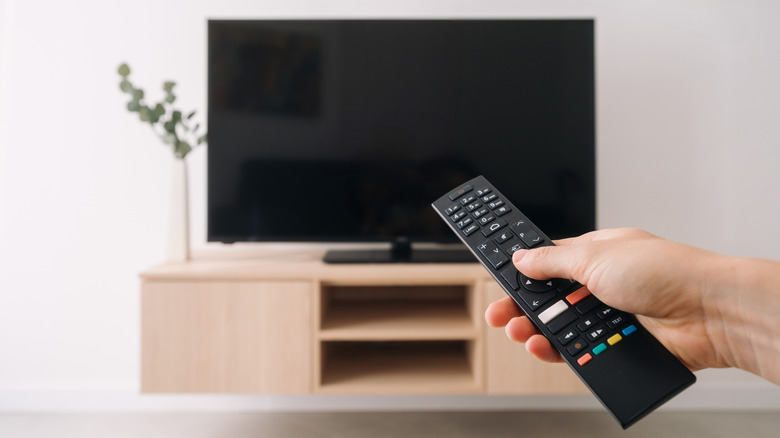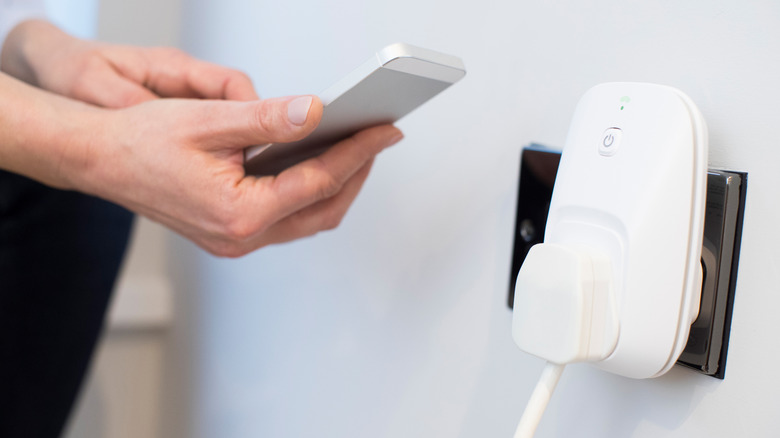Is It Worth It To Unplug Your TV? How Much Money You Could Actually Save
If you're tired of seeing high numbers on your utility statement, then you may be looking for an easy way to save on your electric bill. One popular suggestion is to unplug so-called energy vampires or phantom load offenders — electronics that steadily use electricity even when they're off — like your TV. A Natural Resources Defense Council (NDRC) study, in partnership with Home Energy Analytics and the Stanford Sustainable Systems Lab, found that the total unused standby energy is equal to $19 billion or $165 per household.
So is it worth it to unplug your TV? It might be. The exact amount you can save varies by TV model, age, and local utility rates. According to UGI Energy Link, you might save up to $30 a year, which, while it doesn't seem like a lot, could buy you a cheap meal out. If you have multiple TVs in your home, you might save a bit more if you unplug each one. Not bad, right? Still, when you drill down the savings even more by unplugging other devices, it adds up.
A TV that's "off" still uses electricity and drains it from the outlet. The TV then uses that stream of electricity to power up the second you press a button. Just like a water faucet that might drip, the electricity flows slowly but steadily to the TV, cable box, or any other accessories. According to the U.S. Department of Energy, phantom energy represents up to 10% of residential energy use. TVs are some of the biggest phantom load consumers. If you have a smart TV, it may use even more phantom energy, thanks to its WiFi connection.
How to save on electricity costs by unplugging your TV
Once you realize the savings when you unplug your TV, you may wonder what's the most efficient way to cut off power. Instead of unplugging your TV from the outlet every time, you can use power strips or smart plugs to stop the flow of electricity. This method is also easier if you have a wall-mounted TV or one stored in a cabinet, since it may be hard to reach the TV cord. With a power strip, you can just quickly flip the switch from off to on when not in use. A power strip with a surge protector is best to protect your television from power surges from lightning or electric overload.
Traditional power strips are fine, but for more precise control of your power use, you can invest in smart plugs to make your utility bills more affordable. These plugs use WiFi to control the flow of electricity, and you activate them via an app or your voice. If you're going out of town or leaving the house for multiple hours, you could turn your smart plug off for the allotted time, or, better yet, program it to shut off automatically if your smart plug offers a scheduling feature. Other plugs may have remote operation so you can control your TV (and any plugged-in appliances) away from home. This small change may end up with big savings over time.

